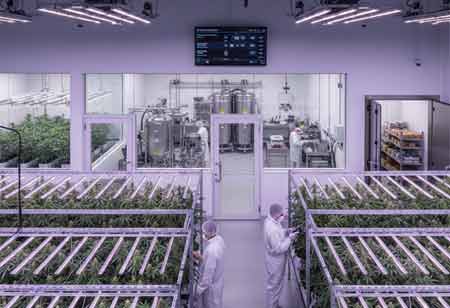Thank you for Subscribing to Cannabis Business Insights Weekly Brief
The Environmental Impact of Cannabis: Weighing Benefits Against Concerns
By adopting sustainable cultivation methods and utilizing renewable energy, cannabis growers can reduce the environmental impact of their crops.

By
Cannabis Business Insights | Monday, February 10, 2025
Stay ahead of the industry with exclusive feature stories on the top companies, expert insights and the latest news delivered straight to your inbox. Subscribe today.
By adopting sustainable cultivation methods and utilizing renewable energy, cannabis growers can reduce the environmental impact of their crops.
FREMONT, CA: Cannabis, commonly referred to as marijuana, has a long history of medicinal and recreational use dating back thousands of years. In recent times, the global view on cannabis has shifted, with many regions legalizing its recreational or medical use. This change has sparked discussions about the environmental impact of cannabis cultivation.
Positive Ecological Effects of Cannabis
Cannabis offers several notable environmental benefits:
1. Renewable Resource: Cannabis is an exceptionally renewable crop that can be grown multiple times annually and adaptable to various climates. This versatility makes it a more sustainable choice compared to other agricultural products.
2. Soil Enhancement: The deep roots of cannabis plants promote soil aeration and better drainage while enriching the soil with nutrients. This contributes to improved soil health and fertility.
3. Carbon Absorption: Cannabis plants play a role in reducing greenhouse gas emissions by absorbing carbon dioxide from the atmosphere and releasing oxygen, thereby aiding in the fight against climate change.
Negative Environmental Impacts of Cannabis
However, the cultivation of cannabis can also have adverse environmental effects:
1. Water Intensity: Cannabis cultivation can be water-intensive, particularly during the flowering stage, potentially exacerbating water scarcity issues in regions already facing water resource challenges.
2. Deforestation: In certain areas, cannabis is grown in forests and sensitive ecosystems, which can result in deforestation and habitat loss for wildlife.
3. Greenhouse Gas Emissions: Indoor cannabis cultivation demands substantial energy for lighting, heating, and ventilation, leading to greenhouse gas emissions that contribute to climate change.
Mitigating the Environmental Impact of Cannabis Cultivation
Efforts to minimize the environmental footprint of cannabis cultivation include:
1. Sustainable Practices: Embracing sustainable cultivation methods such as water-efficient irrigation systems, composting, and using organic fertilizers and pesticides.
2. Outdoor Cultivation: Opting for outdoor cannabis cultivation, which typically consumes less energy and water compared to indoor alternatives.
3. Renewable Energy: The use of renewable energy sources, such as solar or wind power, for indoor cannabis cultivation facilities to reduce their carbon footprint.
4. Waste Management: Implementing recycling and composting for cannabis waste to reduce landfill waste.
In Conclusion
Cannabis cultivation presents a complex interplay of environmental pros and cons. However, by adopting sustainable cultivation practices and embracing renewable energy sources, cannabis growers can play a crucial role in safeguarding the environment while reaping the benefits of this versatile plant.






